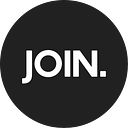Founder Fix #4: Reorganizing Engineering to Focus on Product
Through honest and courageous communication, a product team is born.
By Cyril Perrin, CEO and Co-founder of WIZZCAD
In August, the senior engineer we had named CTO left us. This surprise departure catalyzed a meaningful change in our company and the way we look at our R&D and product.
Every founder we know works tirelessly. Day in and day out, we must be on top of our game to understand how each of our decisions might affect our company down the line. As my co-founder Marc says: The sky’s the limit, and our success is entirely dependent on our ability to innovate.
Sometimes, though, an unexpected event occurs and it turns out to be a lucky break from the universe. This was one of those times.
We learned quickly from our CTO’s departure:
- We needed to be clearer with our expectations of those who lead important functions, and revisit their roles and expectations regularly
- We needed a better way to amplify the ideas of team members who are not yet in leadership positions.
- Staff departures can be an opportunity to re-align and innovate.
Needless to say, we had to reorganize quickly.
The innovation we needed was right there
Within days, our dev team knew exactly what to do. They were well aware of the backlog of untreated issues, the updates other functions had been waiting for and urgent recruitment needs.
One of our R&D team members had the idea for a product-centered structure that would give everyone more autonomy and empower them to contribute their ideas. He had been pitching this change to the CTO for months, but had not felt properly heard.
Less “dev silo”, more cross-functional communication
It seemed like pride in engineering had created a bit of a dev silo. I’m the first one to admit that I had found myself needing to “protect” our CTO to allow him to focus. But a higher volume of big clients, and a faster pace of growth, meant that our CTO needed to spend more time communicating across all functions.
The CTO job was changing as our business grew. Our Ops and Sales teams needed to know what was going on in Dev, and this mayhave overwhelmed our CTO, and the entire Dev team. We should have seen and acted on this sooner.
A product team is born
Our previous setup had development at the center of the organization, and our CTO as the main voice. Now, it’s the product at the center of it all, and everyone’s voice can be clearly heard.
Here’s what we changed:
- We have a proper Product Manager (the same individual who came up with the idea for a product team) who helps ensure a flow of information, process and accountability. Our whole team — across departments — is delighted about this structural change. People from within and outside dev can feel free to bring their observations and ideas forward at any time.
- All our departments feed into Product. Sales, operations, marketing and R&D provide input to the central pillar of our company. There’s a structure to meetings and communication that people are excited about. No one is in the dark anymore.
- Recruitment efforts have been accelerated so that we will soon be fully staffed, and the dev team is implementing a more structured onboarding process.
The moral of our story? Product and people go hand-in-hand, and in order to succeed, no one’s ideas should be hidden from view. It’s essential to tap into all the talent within your company. Marc had a good point when he mentioned that we must utilize our dynamic team to problem-solve internally, just as we problem-solve for our diverse customers.
Structuring our organization to make this happen was paramount. We’ll always encourage honest, transparent and courageous communication, and we’re so very proud of the way our team came together to make us better.
